How to Create a Sleep Sanctuary at Home|Transform Your Bedroom into a Restful Retreat
Exhausted? Tossing and turning all night, chasing sleep that never comes?
Lack of rest doesn’t just make you groggy, it affects your mood, productivity, immune system, and even weight management. Now imagine this, what if your bedroom became a peaceful retreat, where stress melted away the moment you walked in and sleep came effortlessly.
The good news? You can reclaim your nights by creating a sleep sanctuary at home, a personalized space designed to promote deep, uninterrupted rest.
In this guide, we’ll walk you through exactly how to transform your bedroom into a peaceful retreat using science-backed strategies, interior design principles, and real-life tested hacks.
Also read – 5 Proven Sleep Hacks to End Insomnia

What Is a Sleep Sanctuary?
A sleep sanctuary is more than just a fancy term for a cozy bedroom. It’s a carefully curated environment that supports optimal sleep hygiene by minimizing disruptions and maximizing comfort.
Think of it like this:
If your body is a smartphone, your bedroom should be its charging station, quiet, dark, cool, and distraction-free.
Key Components of a Sleep Sanctuary:
- Consistent temperature
- Minimal noise and light
- Comfortable bedding
- Calming colors
- Clutter-free space
- Technology boundaries
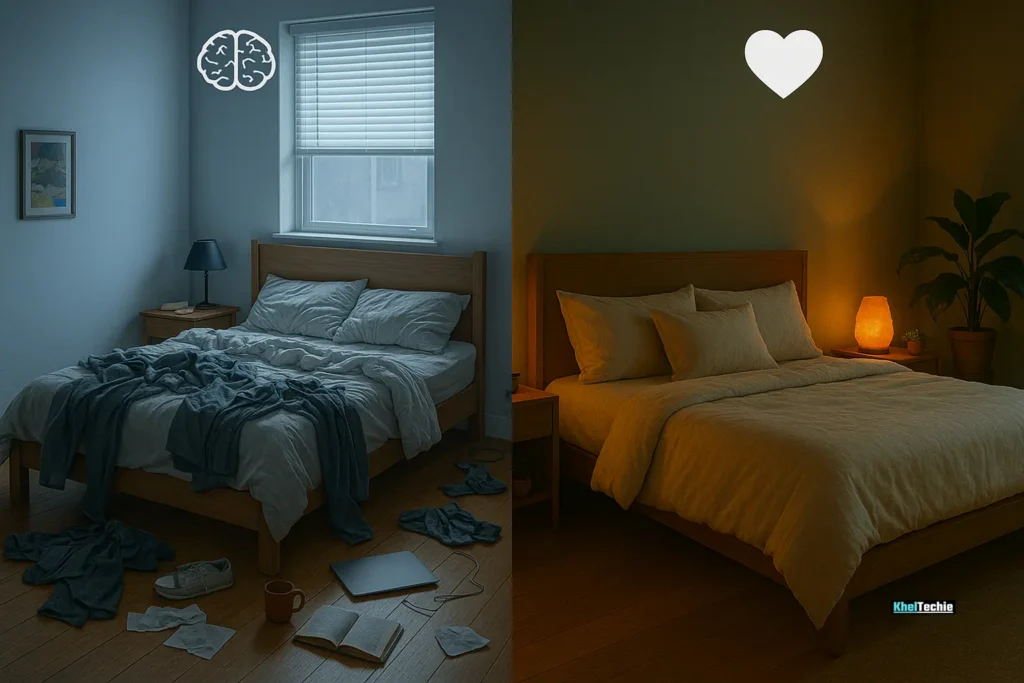
Why Creating a Sleep Sanctuary Matters
Sleep isn’t just downtime, it’s when your brain detoxifies, muscles repair, and memories consolidate. Creating a sleep sanctuary is more than just an aesthetic choice; it’s a vital component of overall health and well-being. The CDC highlights that a bedroom environment that is dark, quiet, and cool can significantly enhance sleep quality. Simple adjustments like using blackout curtains, maintaining a comfortable room temperature, and minimizing noise can make a substantial difference.
NASA’s research further reinforces the importance of an optimized sleep environment. Their studies, initially aimed at improving astronauts’ sleep during missions, reveal that factors such as lighting, temperature, and noise control are critical for restorative sleep. These insights are equally relevant for individuals on Earth, emphasizing that a well-designed sleep environment supports cognitive function, reduces fatigue, and promotes overall health.
Incorporating these evidence-based recommendations into your bedroom setup can transform it into a true sleep sanctuary, fostering better rest and improved daily functioning.
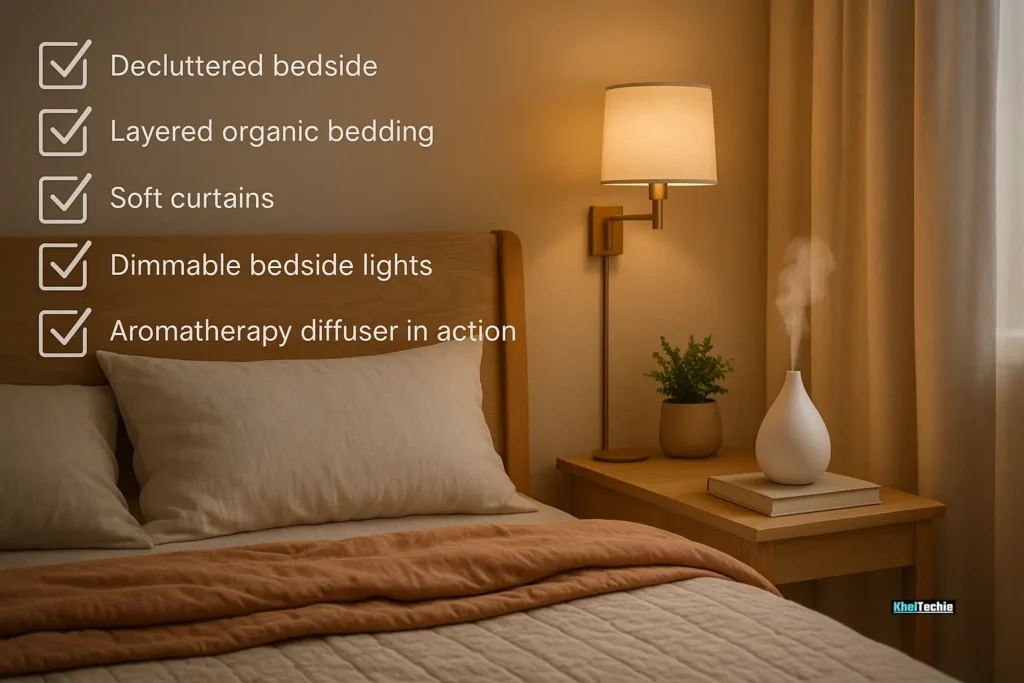
How to Create a Sleep Sanctuary at Home
Let’s break down the process into manageable steps so you can build your dream sleep haven, no matter your budget or space.
1. Declutter & Organize Your Space
Clutter = stress And stress = poor sleep.
Start by removing anything that doesn’t belong in your bedroom, especially work materials, electronics, and laundry.
Use under-bed storage bins for seasonal items and keep surfaces clear, Even a small amount of clutter can trigger cortisol spikes.
2. Invest in Quality Bedding
Your mattress and pillows are the foundation of your sleep sanctuary.
- Mattress: Choose based on your sleeping position and firmness preference. Memory foam, hybrid, or latex, each has pros and cons.
- Pillows: Side sleepers need more support; back sleepers prefer medium loft.
- Sheets: Opt for breathable fabrics like cotton, bamboo, or linen.
- Comforter/Blanket: Weighted blankets can help reduce anxiety and improve sleep onset.
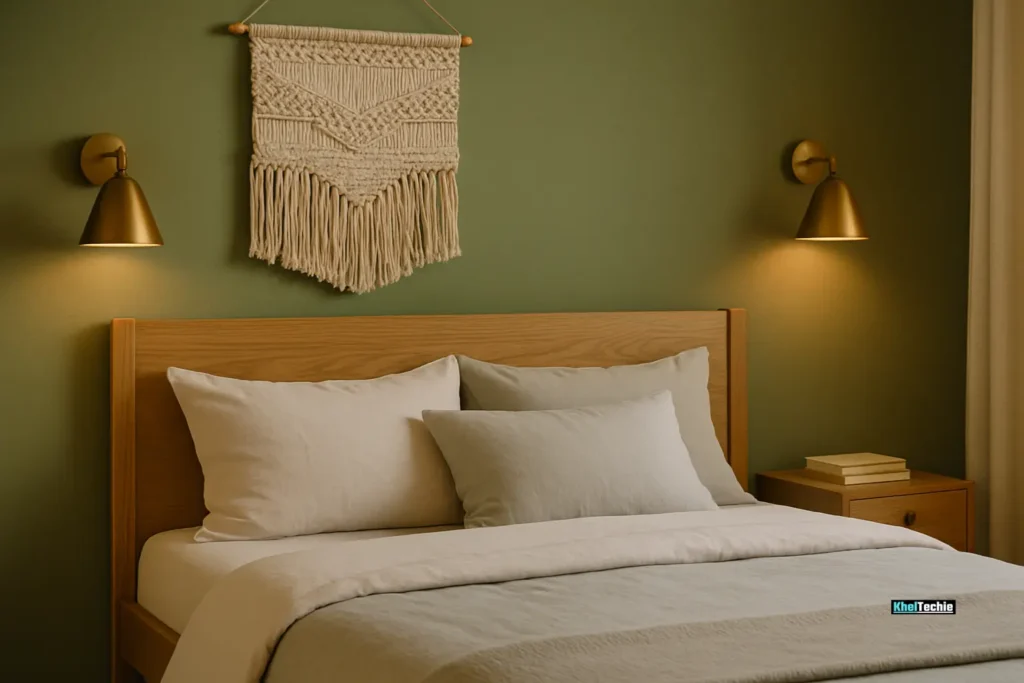
3. Choose Calming Colors
Color psychology plays a big role in sleep. Cool tones like soft blues, greens, and grays have been shown to lower heart rate and blood pressure, making them ideal for bedrooms.
Avoid high-energy colors like red or bright yellow unless used as accents.
4. Control Light Exposure
Light disrupts melatonin production, the hormone responsible for sleepiness.
- Blackout curtains or shades block external light.
- Eye masks offer an affordable alternative.
- Red/orange nightlights preserve melatonin levels if you need some illumination.
Install smart bulbs that dim automatically before bedtime.
5. Minimize Noise Pollution
Noise can wake you up without you realizing it.
- White noise machines or fans help drown out disruptive sounds.
- Soundproof curtains or double-glazed windows reduce street noise.
- Earplugs are great for light sleepers.
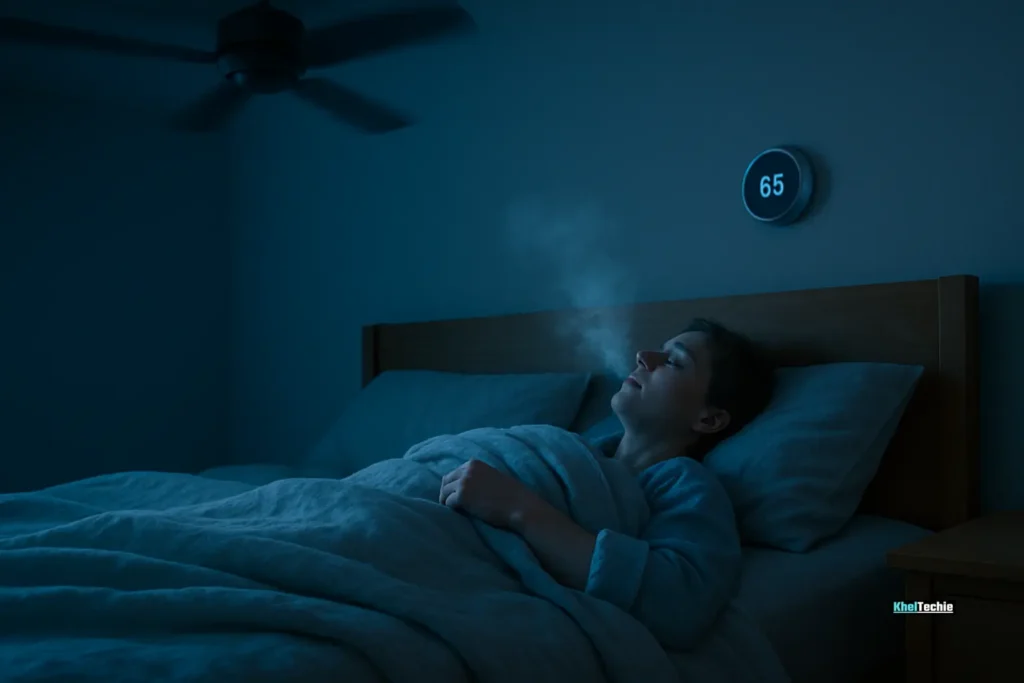
6. Set the Perfect Temperature
The ideal bedroom temperature is between 65–67°F (18.3°C to 20°C) according to the Sleep Foundation.
Use:
- A programmable thermostat
- Cooling mattress pads
- Breathable bedding materials
- Ceiling fans or portable AC units
7. Remove Electronics
TVs, phones, and laptops emit blue light and invite distractions.
Try these:
- Charge devices outside the bedroom
- Replace digital clocks with analog ones
- Keep work off-limits from your sleep zone
If you must use your phone, enable ‘Night Shift’ mode or wear blue-light-blocking glasses.
8. Add Relaxing Scents
Lavender, chamomile, and eucalyptus are proven to reduce stress and promote relaxation.
Use:
- Essential oil diffusers
- Scented candles (non-toxic)
- Room sprays
Be mindful of allergies and sensitivities.

9. 🪴 Bring in Nature
Houseplants like snake plants, lavender, and jasmine purify air and add a sense of calm.
They also:
- Reduce indoor pollutants
- Lower stress levels
- Enhance overall well-being

10. Establish a Pre-Sleep Ritual
Your brain needs cues to wind down.
Create a nightly ritual like:
- Reading a physical book
- Practicing mindfulness or meditation
- Taking a warm bath or shower
- Drinking herbal tea
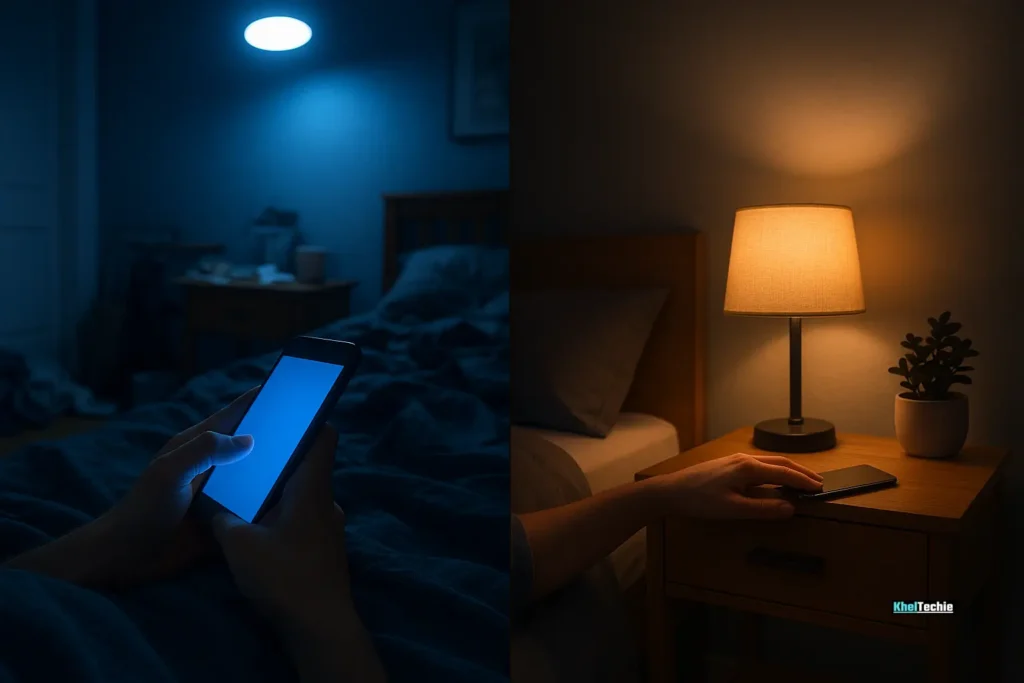
Common Mistakes to Avoid When Creating a Sleep Sanctuary
Even with the best intentions, many people make errors that sabotage their sleep goals.
Here are the top 5 mistakes and how to fix them:
| Mistake | Why It Hurts Sleep | Fix |
|---|---|---|
| Using screens before bed | Blue light delays melatonin | Turn off devices 1 hour before sleep |
| Overheating the room | Raises core body temp | Set thermostat below 68°F |
| Skipping blackout curtains | Light pollution disrupts circadian rhythm | Install thick curtains or use eye mask |
| Ignoring bedding comfort | Poor support causes discomfort | Test mattresses/pillows before buying |
| Keeping a messy room | Mental clutter = stress | Dedicate 10 minutes daily to tidying |
Also read – Evening Habits for Better Sleep and Weight Loss

Final Thoughts: Start Small, Sleep Better
Creating a sleep sanctuary at home isn’t about perfection, it’s about progress. Whether you start with a new set of sheets or invest in blackout curtains, each small change adds up to deeper, more restorative sleep. Remember, Your bedroom should be a place where your body feels safe, your mind feels calm, and your soul feels rested.
Have you already created a sleep sanctuary? Or maybe you’re just getting started? Either way, we’d love to hear your story And if this article helped you, please share it with someone who could use a better night’s sleep.
Together, let’s turn houses into havens, one bedroom at a time.
Frequently Asked Questions
Can I create a sleep sanctuary in a small space?
Absolutely! Maximize vertical space with shelves, use mirrors to reflect light, and opt for multi-functional furniture like beds with storage.
Do I need expensive furniture to build a sleep sanctuary?
Not at all, focus on essentials: bedding, lighting, and noise control. Many DIY solutions work just as well as high-end products.
How long does it take to notice improvements in sleep?
Most people report better sleep within 3–5 weeks of implementing sleep hygiene practices consistently.
Should I keep pets out of my sleep sanctuary?
If your pet disturbs your sleep, consider setting boundaries. Some research shows co-sleeping with pets can affect sleep quality.
What are the best colors for a sleep sanctuary?
Soft blues, muted greens, neutral greiges, and pale lavenders are top choices backed by color psychology studies.
How do I maintain a sleep sanctuary over time?
Schedule regular check-ins., Reassess bedding, lighting, and noise levels every few months to ensure consistency.
What if I live in a noisy neighborhood?
Invest in soundproof curtains, white noise machines, or window inserts to reduce outside disturbances.
What is the ideal bedroom temperature for sleep?
The recommended temperature is between 65–67°F (18.3°C to 20°C) for optimal sleep.
Is it important to have a consistent bedtime routine?
Establishing a regular routine can signal your body that it’s time to sleep, aiding in faster and deeper rest.
Are plants beneficial in a sleep sanctuary?
Yes, certain plants can improve air quality and add a calming presence to your bedroom.
Should I remove electronic devices from the bedroom?
It’s advisable to limit electronic devices, as they can emit light and distractions that interfere with sleep.
How does clutter affect sleep?
A cluttered environment can increase stress and anxiety, making it harder to relax and fall asleep.



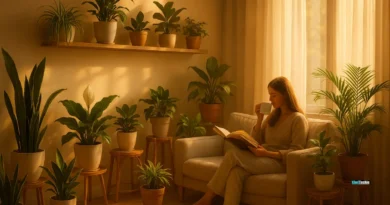

Pingback: Top 11 Indoor Plants For Clean Air: Breathe Like Magic!
Pingback: How To Build A Healthy Skincare Routine In 6 Simple Steps
Pingback: 10 Natural Hacks To Stop Oversleeping & Wake Up Energized